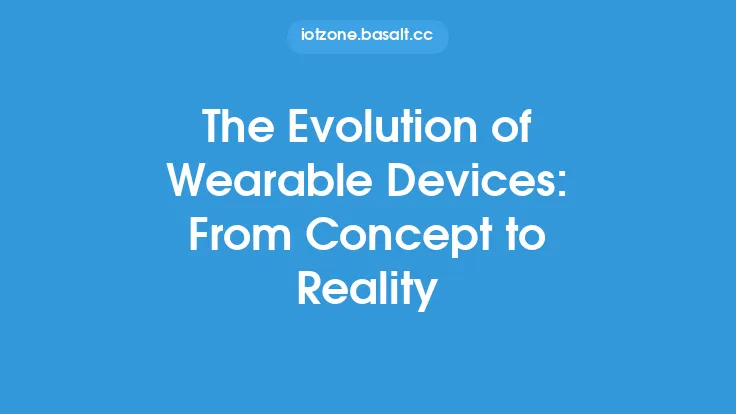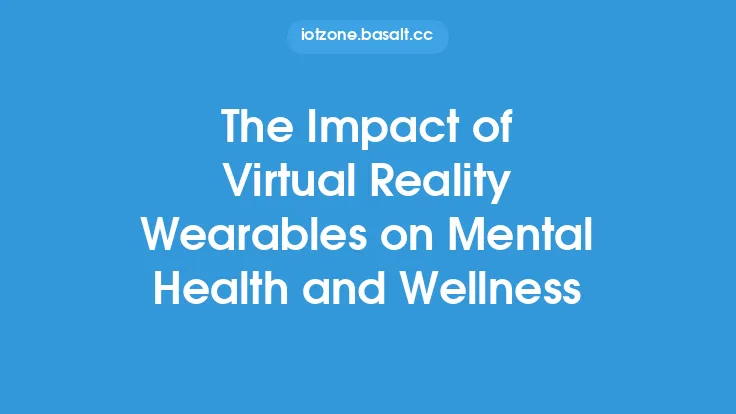The concept of virtual reality (VR) wearables has been around for decades, with the first head-mounted displays (HMDs) emerging in the 1960s. However, it wasn't until the 1990s that VR technology started to gain traction, with the introduction of consumer-grade HMDs and the development of immersive gaming experiences. Since then, VR wearables have undergone significant transformations, driven by advances in technology, changes in consumer behavior, and the emergence of new applications.
History of Virtual Reality Wearables
The history of VR wearables is marked by several key milestones. In the early 1990s, companies like Forte Technologies and Virtuality introduced the first consumer-grade HMDs, which were bulky, expensive, and limited in their capabilities. These early devices were largely used for gaming and entertainment, but they laid the foundation for the development of more sophisticated VR technology. In the 2000s, the introduction of motion sensors, accelerometers, and gyroscopes enabled the creation of more immersive and interactive VR experiences. This led to the development of new applications, including training simulations, educational programs, and therapeutic tools.
Technical Advancements
The evolution of VR wearables has been driven by significant technical advancements. One of the key developments has been the improvement in display technology. Modern VR HMDs use high-resolution displays, such as OLED and LCD panels, which provide high pixel densities, fast refresh rates, and low latency. These displays enable the creation of highly immersive and realistic VR environments, with detailed graphics and smooth motion. Another important development has been the introduction of advanced tracking systems, including optical, inertial, and magnetic tracking. These systems enable precise tracking of the user's head and body movements, allowing for more realistic and interactive VR experiences.
Components of Virtual Reality Wearables
A typical VR wearable consists of several key components, including the display, tracking system, sensors, and controllers. The display is the core component of a VR HMD, providing the visual interface for the user. Modern VR displays use high-resolution panels, with pixel densities ranging from 1000 to 2000 pixels per inch (PPI). The tracking system is responsible for tracking the user's head and body movements, using a combination of sensors and cameras. The sensors used in VR wearables include accelerometers, gyroscopes, and magnetometers, which provide data on the user's movements and orientation. The controllers are used to interact with the virtual environment, using a combination of buttons, joysticks, and gestures.
Types of Virtual Reality Wearables
There are several types of VR wearables, each with its own unique characteristics and applications. PC-based VR HMDs, such as the Oculus Rift and HTC Vive, are designed for use with high-performance computers and provide highly immersive and interactive VR experiences. Console-based VR HMDs, such as the PlayStation VR, are designed for use with gaming consoles and provide a more affordable and accessible VR experience. Standalone VR HMDs, such as the Oculus Quest, are self-contained devices that do not require a computer or console and provide a highly portable and convenient VR experience.
Applications of Virtual Reality Wearables
VR wearables have a wide range of applications, including gaming, education, training, and therapy. In gaming, VR wearables provide highly immersive and interactive experiences, with detailed graphics and realistic motion. In education, VR wearables are used to create interactive and engaging learning experiences, with virtual labs, simulations, and field trips. In training, VR wearables are used to simulate real-world environments and scenarios, providing a safe and effective way to train personnel. In therapy, VR wearables are used to treat a range of conditions, including anxiety disorders, PTSD, and phobias.
Challenges and Limitations
Despite the significant advancements in VR wearables, there are still several challenges and limitations to be addressed. One of the key challenges is the high cost of VR HMDs, which can range from several hundred to several thousand dollars. Another challenge is the limited content availability, with many VR experiences still in the development stage. Additionally, VR wearables can cause eye strain, headaches, and motion sickness, particularly for users who are new to VR. Finally, there are concerns about the social and psychological impacts of VR, including the potential for addiction and social isolation.
Future Developments
The future of VR wearables is likely to be shaped by several key trends and developments. One of the key trends is the emergence of standalone VR HMDs, which are self-contained devices that do not require a computer or console. Another trend is the development of advanced tracking systems, including optical and inertial tracking. There is also a growing focus on social VR, with the development of virtual social platforms and experiences. Finally, there is a growing interest in the therapeutic applications of VR, with the development of new treatments and therapies for a range of conditions. As VR technology continues to evolve, we can expect to see new and innovative applications of VR wearables, with the potential to transform a wide range of industries and aspects of our lives.




